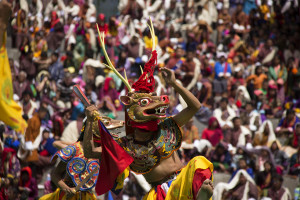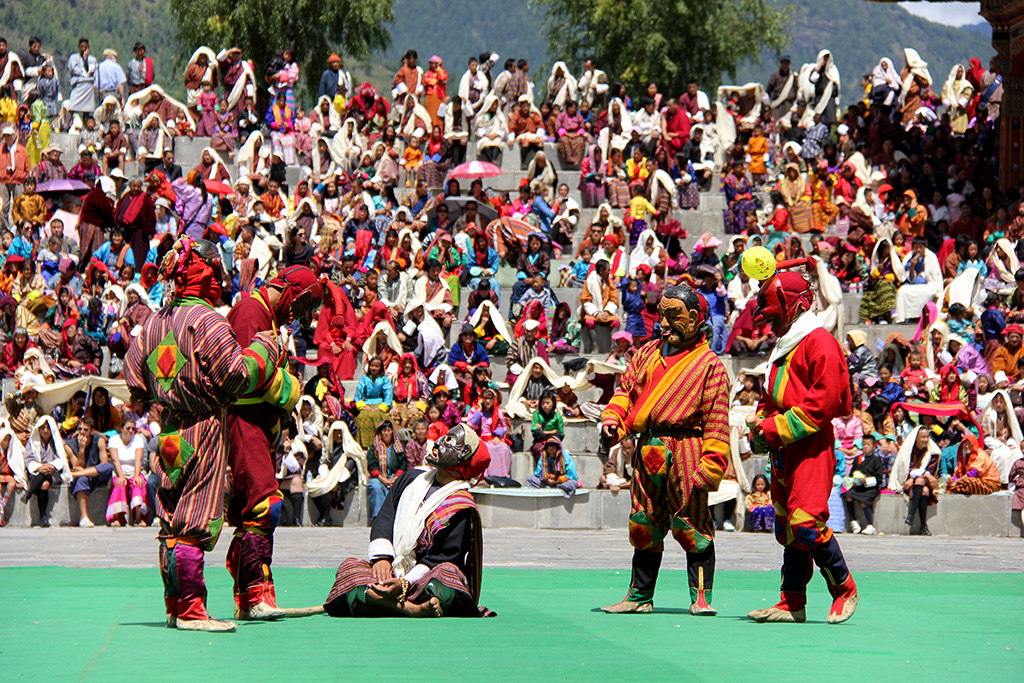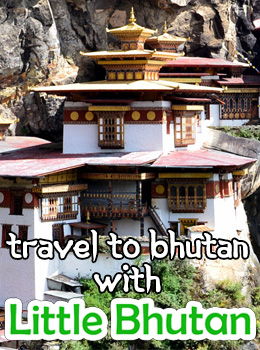 Bhutan has many indigenous celebrations apart from the usually observed government and national holidays. The most popular ones are the Tsechu festivals.
Bhutan has many indigenous celebrations apart from the usually observed government and national holidays. The most popular ones are the Tsechu festivals.
Tsechu literally means “the tenth day” of the lunar calendar when Guru Rinpoche, the patron saint of Bhutan, was born though the exact time when it is celebrated may vary according to the temple or place.
The Bhutanese people attend the Tsechu, a social gathering, dressed in their finest attire. They witness mask dances, which are supposed to purify them of all sins. Tsechus are usually accompanied by copious amounts of food, drinks and revelry.
The Paro and Thimphu Tsechus are the more popular Tsechus in Bhutan. They are a spectacular celebration and display of colour, people and culture. Many tourists can be seen attending these festivals.
Other popular festivals include the Nomad, Takin, Black-necked crane and Matsutake festivals. These festivals are usually based on special or unique features the kingdom offers. The nomad festival is a celebration of indigenous tribal culture of the highlanders; the Takin festival celebrates the national animal Takin and the Black-necked crane festival celebrates the endangered cranes that roost in Bomdeling, Trashigang during winter.
Festivals like the Haa summer festival and Matsutake festival helps the local communities in generating income while keeping the local culture alive and thriving. The recently commissioned Druk Wangyel Tsechu has a story of courage and heroism behind it.

